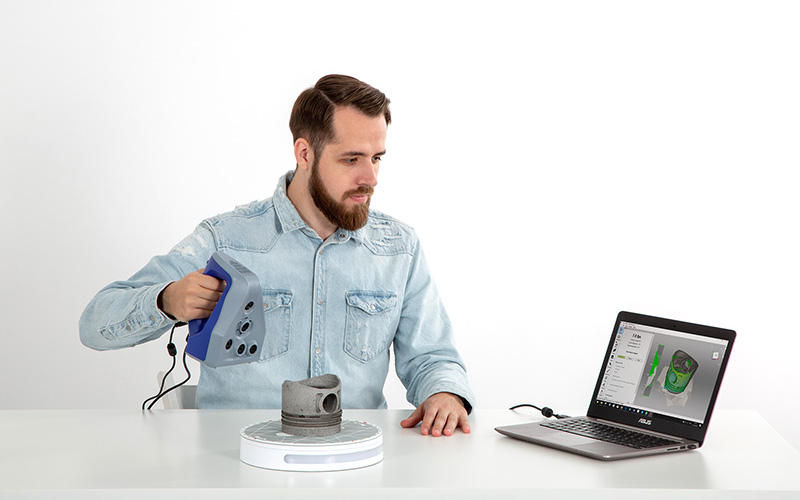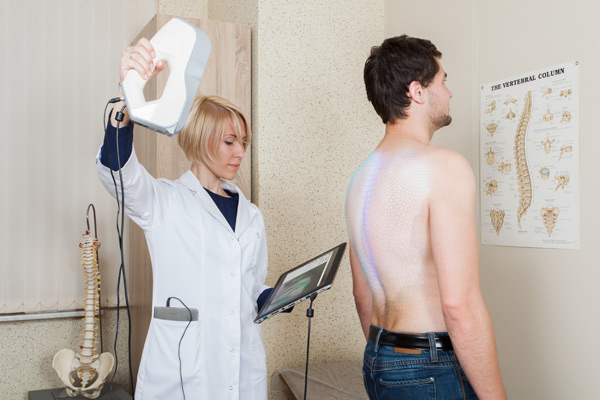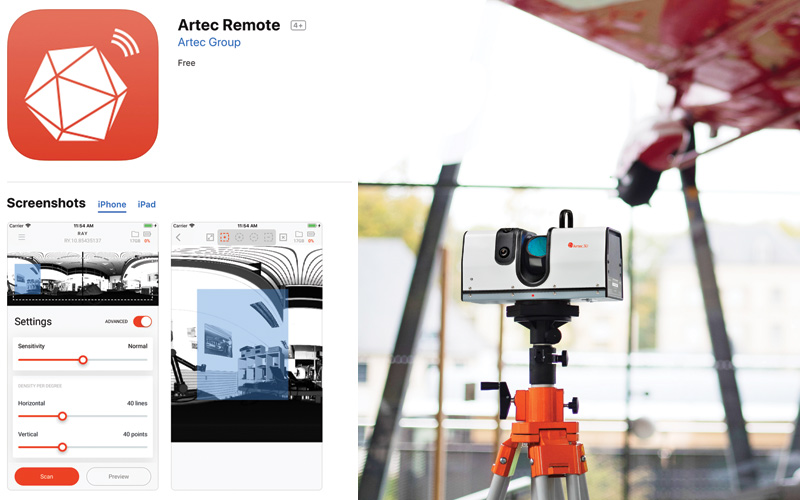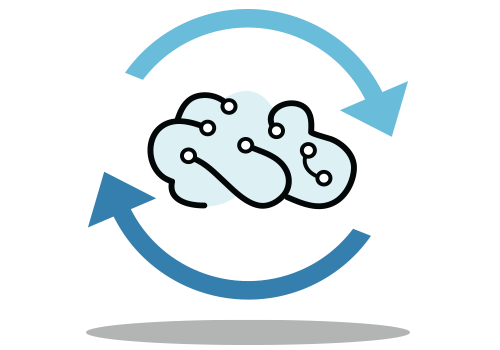It’s the beginning of a new decade! What a great time to see what are the top 3D scanning trends we’re currently seeing now and will continue to see in 2020.
Less Is More
Professional 3D scanner manufacturers are taking a minimalist approach when it comes to 3D scanner design and development.

A common theme we see lately in the 3D scanning industry centers on simplicity. Professional 3D scanner hardware and software strive to be minimalistic in terms of design while maximizing on functionality.
Nowadays, it’s not about packing too many tools or adding bells and whistles in a 3D scanner.
The best professional 3D scanners are about keeping the 3D scanning process as streamlined as possible—all the while getting the best quality raw scan data (clean, without much noise) in high-resolution and accuracy.
It’s about getting great quality data right in the first pass, especially when 3D scanner output is used as the source data for industry applications including scientific measurement, reverse engineering, or quality inspection.
The result: The user spends less time on post-processing while getting quality scans for their project, which saves valuable time. Less tedious work also eliminates frustrations.
When done right, it might look easy from a user’s perspective, but it’s very difficult to achieve from a developmental standpoint.
3D scanning portion is typically the first part in the project to gather data.
Before, 3D scanning process took longer.


As technology evolved and the 3D scanning process is shortened due to efficiency, it’s quicker to complete the overall project.

It’s All About The User
User Experience Is Front And Center.
We’ve all been there. When clunky technology hinders you from achieving your goal, you really feel the pain. Usability plays an important role. That’s why the next generation of 3D scanners, alongside 3D scanning software and accessories, is about making the user experience even better.
Before, professional-grade 3D scanners were mainly competing on which ones have the best technical specifications—how accurate, how good of a resolution, how fast they can scan—at a certain price range. But once 3D scanners are pretty much more or less in the level playing field from a numbers perspective, 3D scanner manufacturers have to look for ways to enhance the user experience by making the 3D scanning process more intuitive. They started incorporating features that users would appreciate to differentiate themselves in the market and gain a competitive edge.

Pairing Tablets and Phones With Professional-Grade Systems To Facilitate Ease Of Use
Gone are the days when 3D scanners have to be in a specific location or objects needed to be brought to the 3D scanner for digitization. There is a big push for portability and convenience amongst professional 3D scanners. Systems are getting smaller, more compact, and more portable than ever before.
When you don’t need a laptop or a computer for 3D scanning but instead can use a tablet to control the 3D scanning process, it gives users total freedom with mobile 3D scanning. It makes 3D scanning convenient and gives users the ability to move around freely as they scan the subject.

Artec has long been championing the use of tablets for 3D scanning by being compatible with popular tablets.
In the latest 3D scanner developments, professional systems are leveraging WiFi technology to make systems easier to control. 3D scanners can even be controlled using a mobile phone or tablet using a wireless app. This means you can complete scans without being connected to a computer or laptop. No wires required!

Available for both iOS and Android, the Artec Remote app allows users to scan with the Artec Ray without being linked to a computer. The app allows you to instantly link to the LIDAR system via WiFi, scan from an iPad or iPhone, and quickly save the data to an SD card.
Artec handheld 3D scanners also have the ability to mirror the screen to your smartphone or tablet so you can see the results easier as you scan in tight spaces.

Smart Automation Elevates The User Experience
Automation can sometimes come off as having a one-tracked operation that is unable to adapt when issues arise. What’s great about the next wave of 3D scanning technology is their ability to adjust even when automation rears off course. This prevent foreseeable issues and eliminate them before they happen so the scanning portion of the project can be done faster and with fewer headaches.
Artec’s new automated rotary table system has auto-tracking recovery. If tracking is lost anytime during the 3D scanning process, the platform simply pauses and turns back about 15 degrees, and continues 3D scanning once tracking has been regained. This ensured flawless digital captures every time.
Not Just A New Category Anymore
Entry-Level professional 3D scanners are getting better and better at generating high-quality scan data output.
Not all industry applications require the best accuracy or resolution in a 3D scanning system. It all depends on your use case. However, consumer 3D scanners don’t typically generate scan data results that are reliable or high enough quality for industry use.
Professional 3D scanner manufacturers have heard the call for professional entry-level 3D scanning systems that are both affordable (around $5,000-$7,000) while keeping the quality of the scan data as best they can at that price range. That means the scan quality needs to be consistently good for it to be trusted for work-related applications.
In the past few years, a few professional 3D scanner manufacturers known for creating high-end industrial 3D scanning systems have ventured into this new category. The professional low-cost 3D scanner category has been gaining more traction. As more of them enter into the market, the quality of the scan data that are coming out of these 3D scanners are getting better and better.
This is a great sign because it empowers many businesses and organizations who normally wouldn’t be able to fund these capital investments an opportunity to innovate within their industries without fronting up too much capital from the very beginning. Low-cost 3D scanning isn’t just a novelty or gimmick that was once presented at the peak of the consumer 3D scanner and 3D printing hype. Affordable professional 3D scanners actually output pretty good quality data to work with.
Taking Challenges Head-On
Professional 3D Scanners Are Getting Really Good At Scanning Even Challenging Surfaces or Conditions.
If you have the time to peruse 3D scanning articles online, some of the challenging surfaces for optical 3D scanners to scan are:
- Dark
- Shiny
- Reflective
- Hair/fur
- Glass
- Featureless/No geometry
- 3D scanning in daylight or outdoors
This is due to the fact that these systems use light as a projection source for 3D scanning. There are workarounds to it, with most of them requiring part preparation, such as spraying white powder on the surface, which means it takes more time to scan a challenging part. However, in the last few years, professional 3D scanners have developed sophisticated algorithms for their 3D scanning software to overcome scanning these challenging surfaces.

No need to spray or put markers on a part to scan challenging parts.
Without the need for part preparation, this makes it much easier and faster to scan challenging objects. It also broadens the use of 3D scanners on more industry applications because of its ability to scan more types of surfaces.
The Artec Space Spider 3D scanner was used to help create a 3D printed replica of a silver and glass flask for the Victoria and Albert Museum collection.
The Artec handheld 3D scanners can scan challenging surfaces.
Professional 3D scanners are honing in on their craft: producing digitizing real-world objects at the highest quality in the fastest time. It’s about doing it better but with less effort and at more of a convenience for the user. We can’t wait to see what the future of 3D scanning has to offer.
Looking to Purchase 3D Scanning Equipment (Hardware/Software) this year?
The start of the new year is full of great opportunities! Purchasing 3D scanning equipment earlier in the year will get you off to a good start for what’s to come in 2020.

Do you have any questions on how 3D scanning can transform the way you work?
Get a free consultation with our technical specialist.